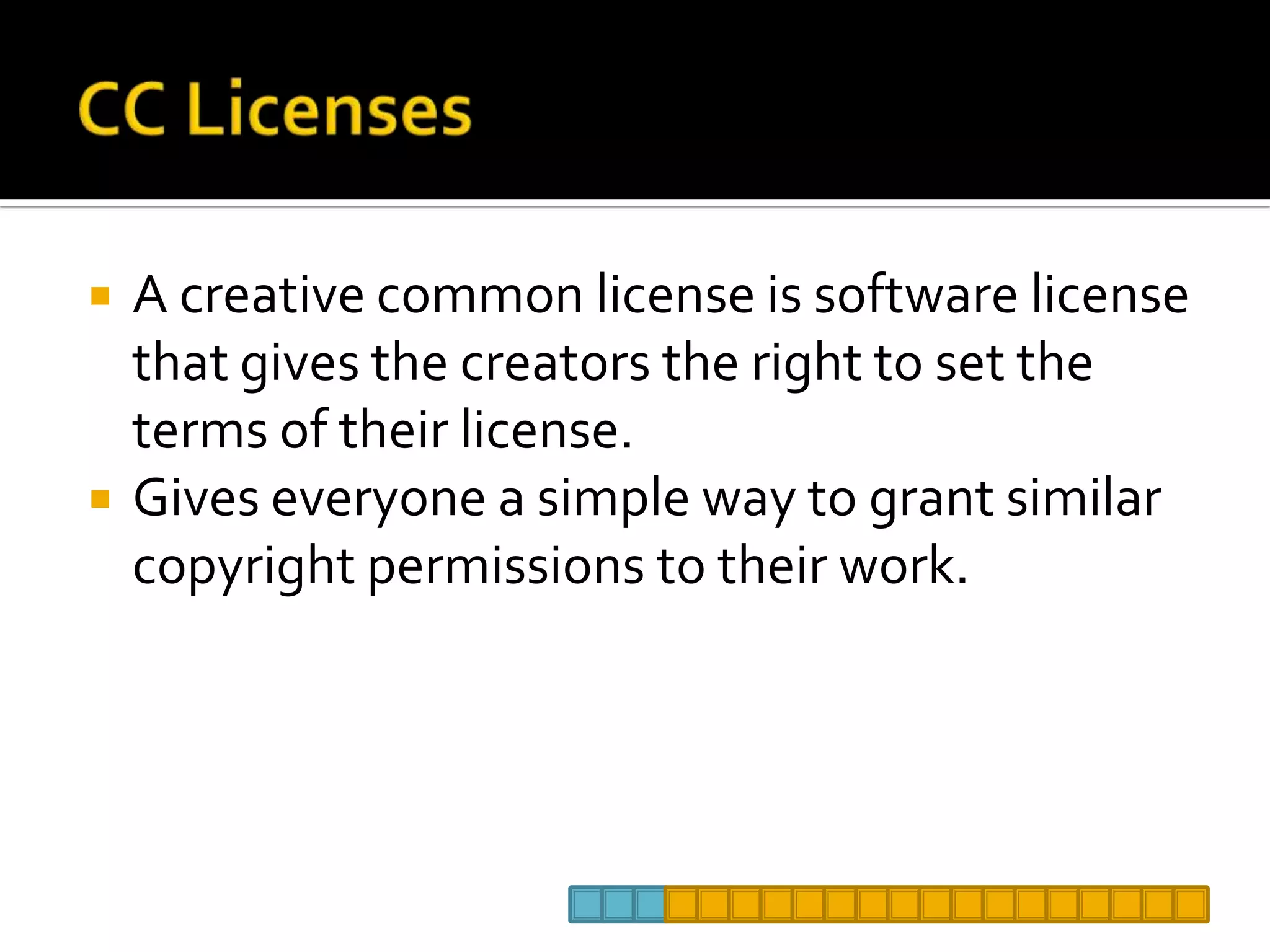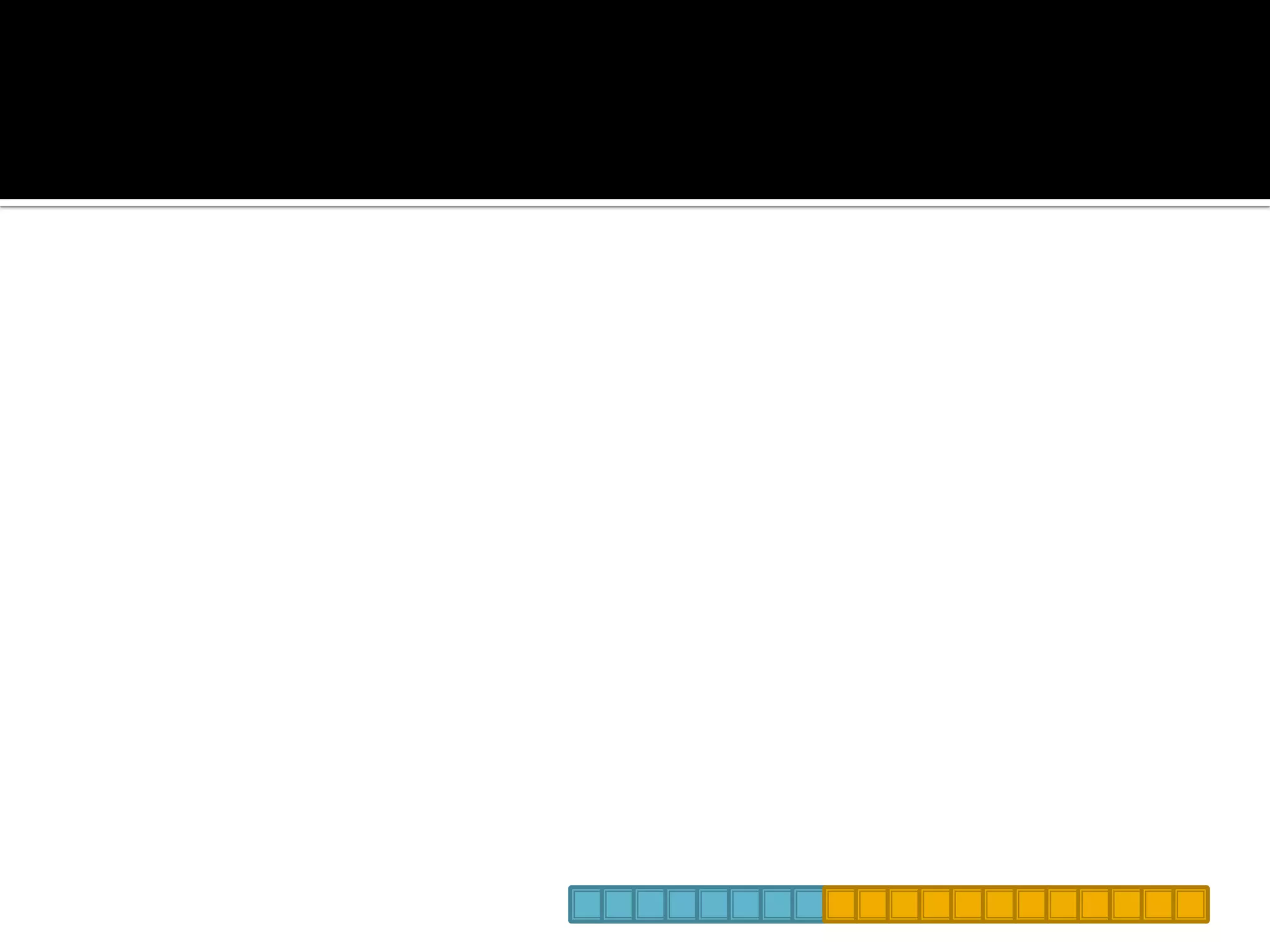Creative Commons is a nonprofit organization that develops free copyright licenses that allow creators to share their work and let others use it in certain ways. They were founded in 2001 by law professor Lawrence Lessig to address issues with copyright and promote sharing and reuse of creative works. Creative Commons offers several types of licenses that allow things like attribution, sharing alike, non-commercial use, and no derivatives. These licenses provide an alternative to traditional "all rights reserved" copyright and allow creators more flexibility in how others can use their work.





































